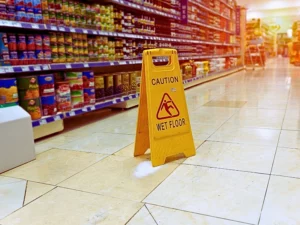Workers can suffer serious injuries and death in confined workspaces that have insufficient oxygen, toxic fumes, combustible materials and tight spaces that can trap workers inside. The U.S. Department of Occupational Safety and Health Administration (OSHA) requires all employers to provide safe work environments for workers, including confined spaces that present specific dangers. Confined spaces can be present in almost any occupation, but they are commonly found within the construction, mining, utility and drilling industries where workers often have to work underground. Confined spaces include, but are not limited to, areas such as manholes, storage tanks, silos, pits and vats, storage bins, sewers and tunnels, underground utility vaults and pipelines.
The Dangers of Confined Work Spaces
Many confined workspaces pose dangers due to lack of oxygen, toxic fumes, combustible materials, and tight spaces. OSHA classifies these confined spaces as permit-required work environments that must be tested prior to entry and continually monitored for hazards. Permit-required confined spaces include the following conditions:
- Spaces that contain a hazardous atmosphere
- Spaces with limited airflow or oxygen
- Spaces that contain a toxic or combustible material
- Spaces with exposed live wires
- Spaces with unguarded equipment or machinery
- Spaces will walls that slope inward and/or floors that slope downward into smaller spaces
All permit-required confined spaces must be properly identified by an employer and all workers must be informed of potential dangers. Employees are not permitted to enter these spaces without training and an official permit. Since confined spaces have limited openings for entry or exit and smaller than normal work areas, they are not meant for continuous worker occupancy on a daily basis. Employees who work in permit-required confined spaces are required to maintain contact at all times with a trained attendant outside of the space either visually, by phone, or by two-way radio. This allows the attendant to issue alerts and order evacuations if necessary.
Evaluation Testing
The atmosphere within a confined workspace must be tested on a continual basis to protect workers. Special equipment is used that can detect any hazardous chemicals at dangerous levels. Evaluation testing is done to detect atmospheric hazards and identify procedures that must be followed to ensure a safe work environment before workers enter the space. Test results must be evaluated by a professional OSHA technician, a registered safety engineer, or a certified industrial hygienist. Once the confined space is properly tested for air quality, toxic fumes and vapors, and combustible gases, the actual test results must be recorded on the required permit and posted at the work site.
For deep confined spaces like underground vaults, pits, and pipelines that may have areas leading away from the point of entry or exit, atmospheric testing must be done in different areas. These type spaces often have layered atmospheres, so testing must be done in surrounding areas for a minimum of four feet in all directions from the main work area.
Injuries and Fatalities
According to the Centers for Disease Control and Prevention (CDC), approximately 13 workers die every day due to a traumatic injury on the job in the United States. Investigations conducted through the FACE program allow the identification of factors that contribute to these fatal injuries. Since the inception of the FACE program in 1982, approximately 171 fatal accidents have occurred in confined workspaces.
- In 2017, three workers died in a confined workspace in a Florida manhole from lethal levels of carbon monoxide and hydrogen sulfide. One worker passed out, then two other workers tried to rescue him. A local firefighter who received the rescue call was also overcome by the toxic gas fumes while trying to help the original victims. After being placed in an induced coma for several days at a nearby hospital, he did survive the accident.
- In 2017, three workers at a railway facility in Pennsylvania were found unconscious inside of a tank car that carried liquids and chemicals. Workers were overcome by toxic fumes while they were cleaning the tank. Investigators determined low oxygen levels in the tank car which caused hydrogen sulfide, a toxic gas that can be lethal, to fill up the workspace. The rail car company claimed they had no knowledge of confined spaces and OSHA safety regulations. The company received numerous OSHA citations for confined space violations.
OSHA established industry standards for confined spaces in 1992 and issued a separate standard for the construction industry in 2016. OSHA states that regulations for confined spaces are well documented and there is no excuse for workplace accidents and injuries. To enforce safety, OSHA has increased fines and penalties for employers who claim ignorance or ignore safety regulations for confined spaces.




